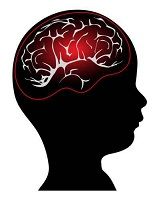Article
Pediatric Epilepsy Racks Up Big Bills
Author(s):
The year following a child's first diagnosis of epilepsy is likely to cost as much as $20,000 researchers concluded after a retrospective study of billing data for 258 patients. Jamie L. Ryan, PhD, and colleagues findings' were published in Neurology online on July 10, 2015.

The year following a child’s first diagnosis of epilepsy is likely to cost as much as $20,000 researchers concluded after a retrospective study of billing data for 258 patients. Jamie L. Ryan, PhD, and colleagues findings’ were published in Neurology online on July 10, 2015.
The researchers gathered data from a New Onset Clinic from patients seen between July 2011 and December 2012. Their goal was to estimate the healthcare expenses for a child newly diagnosed with epilepsy and seen by an interdisciplinary pediatric team. They looked for predictors of annual charges based on demographic, clinical psychosocial factors.
For the 258 patients included in the study, a total of nearly $5.2 in healthcare costs were accrued during the year following diagnosis. The charges were for services such as neurology clinic visits, tests, behavioral medicine visits, and hospital admissions. Perhaps not surprisingly, although on 13% of the patients were hospitalized, those admissions accounted for 27% of the $5.2 million total.
Patients who experienced at least one seizure during the first year incurred more than twice the charges compared to those who did not. No other demographic or clinical characteristics appeared to impact the amount patients were charged. The only psychosocial factor that seemed to cause a variance in costs was health related quality of life (HRQOL), but the variance was so small that the final results remained the same.
The most important factor in reducing costs during the year following a pediatric diagnosis of epilepsy is reducing the risk of uncontrolled seizures. There is some evidence that not following recommendations could lead to uncontrolled seizures. The researchers offered the example of an adolescent refusing to take medication that could lead to weight gain, which would increase the risk of seizure.
Although there are some limitations to the study, such as the fact that all data came from a clinic that uses interdisciplinary teams, and only early/baseline variables were considered, the researchers concluded that improving seizure control, along with HRQOL may lead to lower costs, along with better health outcomes.




